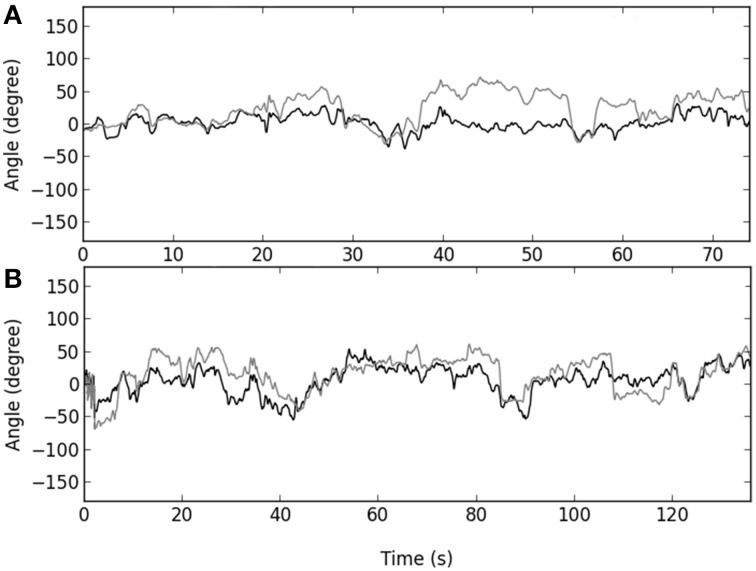Figure 8.
Angular time-series of the hip (black) and neck (gray) rolling motion for the horizontal-edge route (A) and double-edge route (B) for one individual. The angular time-series showed higher concentration around μ for the horizontal-edge route (K = 22.9 for hip and 9.5 for neck) than for the double-edge route (K = 7.7 for hip and 5.2 for neck), meaning that this meta-stable region of performance encourage higher behavioral exploration that could be notably reflected by higher variability of the trunk rolling motion.

